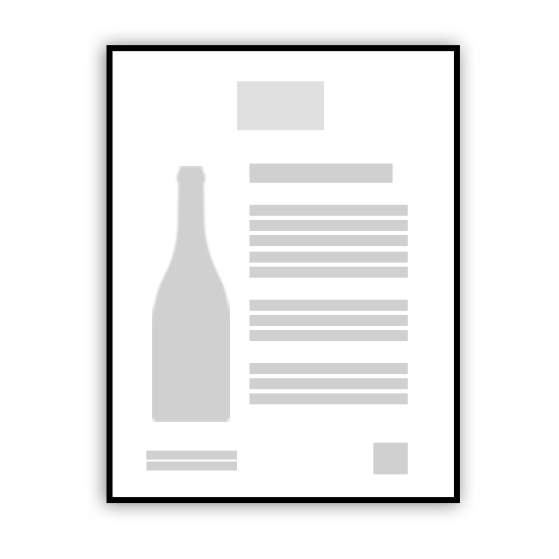PrûÊsentation
Vorstellung
ChûÂteau de Beaucastel ist seit langem als einer der grûÑûten Weine in Frankreich berû¥cksichtigt worden. Es ist bekannt fû¥r seine Eleganz, Ausgewogenheit und Alterungspotential. Beaucastel hat ein auûergewûÑhnliches Terroir an der nûÑrdlichen Grenze der Appellation ChûÂteauneuf du Pape, den Mistral winde ausgesetzt. Alle dreizehn Sorten der Appellation sind seit den sechziger Jahren organisch gewachsen.
Der Jahrgang
Delicate Vintage
A hale storm hurt a part of the Mourvûˆdre, Counoise and Muscardin
But the harvest were made in perfect conditions
A hale storm hurt a part of the Mourvûˆdre, Counoise and Muscardin
But the harvest were made in perfect conditions
Lage
ChûÂteauneuf du Pape, zwischen Orange und Avignon, ChûÂteau de Beaucastel Rot ist ein 70-Hektar Weinberg.
Terroir
ChûÂteau de Beaucastel ist 110 Hektar groû, in einem einzigen Grundstû¥ck im Norden der Appellation. Das Terroir ist archetypisch der besten Terroirs in ChûÂteauneuf: Kieselsteine auf der OberflûÊche, Sand, Lehm und Kalk tiefer im Boden. Die Reben sind alt und wurden organisch seit 50 Jahren angebaut, dies ermûÑglicht es den Wurzeln auûergewûÑhnlich tief zu wachsen.
Beaucastel baut alle dreizehn Rebsorten, die durch die Appellation zugelassen sind an.
Beaucastel baut alle dreizehn Rebsorten, die durch die Appellation zugelassen sind an.
Reife
Jede Sorte wird einzeln und von Hand geerntet. Die Weinbereitung erfolgt in EichenfûÊssern fû¥r die reduktiven Sorten (Mourvû´dre, Syrah) und in der traditionellen BetonbehûÊlter fû¥r die oxydative Trauben (alle anderen). Sobald die MilchsûÊuregûÊrung abgeschlossen ist, mischen die Familie Perrin die verschiedenen Sorten. Die Mischung reift dann in EichenfûÊssern fû¥r ein Jahr vor der Abfû¥llung.
Rebsorten
Grenache : 30%
Mourvû´dre : 30%
Vaccarû´se, Terret Noir, Muscardin, Clairette, Picpoul, Picardan, Bourboulenc, Roussanne : 15%
Syrah : 10%
Counoise : 10%
Cinsault : 5%
Mourvû´dre : 30%
Vaccarû´se, Terret Noir, Muscardin, Clairette, Picpoul, Picardan, Bourboulenc, Roussanne : 15%
Syrah : 10%
Counoise : 10%
Cinsault : 5%
Rat
Servieren
Rund 15 ô¯ C Wenn mûÑglich, dekantieren des Weines.
Verkostung
Fairly light red colour with signs of evolution.
The nose is evolved but very elegant with notes of old leather and spices.
The mouth is also very elegant with a Northern style and a good acidity.
This little vintage is at its best and Pinot enthusiasts will love this wine.
To drink now.
The nose is evolved but very elegant with notes of old leather and spices.
The mouth is also very elegant with a Northern style and a good acidity.
This little vintage is at its best and Pinot enthusiasts will love this wine.
To drink now.
Bewertungen
"Yields for the 1997 Chateauneuf du Pape were tiny, averaging 22 hectoliters per hectare, and the wine is one of the most seductive and forward young Beaucastels I have tasted since the 1985. The blend was 35% Mourvedre, 30% Grenache, 10% Counoise, 5% Syrah, 5% Cinsault, and the rest other southern Rhone varietals. The deep ruby color is accompanied by forward, attractive aromatics consisting of black raspberries, cherries, licorice, floral, and herb scents. The wine is fruit-driven, with less structure than usual, but luscious cassis, licorice, and blackberries inundate the palate with no hard edges. A seductive, supple-textured, medium to full-bodied Beaucastel, this wine should drink well young, and last for 15 or more years."
"A clever effort for '97. Dark and fruit-driven, this fresh, compacted ChûÂteauneuf delivers blackberry, toasted oak, plum and game. The tannins are well integrated in the ways of modern winemaking"
"Beautiful wine despite a complicated vintage. A lot of finesse and balance for this vintage that is now ready to drink. Very elegant and perfect wine to enjoy now.
Stand the bottle upright 48 hours before serving to avoid any deposit
"
Stand the bottle upright 48 hours before serving to avoid any deposit
"
"Medium ruby in color, this wine smells of beautiful cherry and raspberry fruit, wet stones, and a bit of crushed green herbs. In the mouth the wine is still a bit compressed, more narrow, with mineral and wet earth character along with cherry and raspberry fruit that are all held firmly in the grip of powdery tannins. The finish is a little shorter, but the acidity is excellent, and the deep minerality of the wine shows through. 1997 was a cold, rainy vintage, and widely dismissed as a poor year. "


